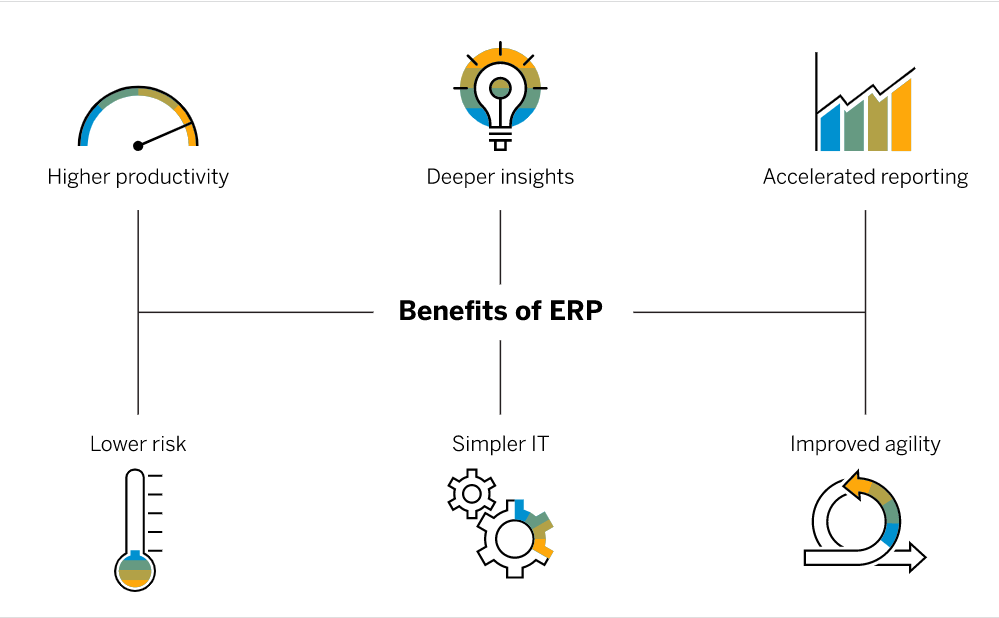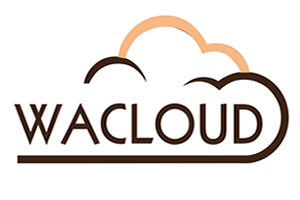Enterprise resource planning (ERP) refers to a designed software system that organizations use to manage day-to-day business activities such as accounting, procurement, project management, risk management and compliance, and supply chain operations.
ERP helps to efficiently manage all these processes in an integrated system. It is often referred to as the system of record of the organization.
Why is ERP important?
Sometimes described as “the central nervous system of an enterprise,” an ERP software system provides the automation, integration, and intelligence that is essential to efficiently run all day-to-day business operations. Most or all of an organization’s data should reside in the ERP system to provide a single source of truth across the business.
Finance requires an ERP to quickly close the books. Sales needs ERP to manage all customer orders. Logistics relies on well-running ERP software to deliver the right products and services to customers on time. Accounts payable needs ERP to pay suppliers correctly and on time. Management needs instant visibility into the company’s performance to make timely decisions. And banks and shareholders require accurate financial records, so they count on reliable data and analysis made possible by the ERP system.
The importance of ERP software to businesses is illustrated by the growing adoption rate. According to G2
Six key benefits of ERP
A good ERP system offers many advantages — which can vary depending on how the system is deployed. The benefits of cloud ERP, for example, are different than on premise. That said, there are six major benefits that apply to all modern ERP solutions:
- Higher productivity: Streamline and automate your core business processes to help everyone in your organization do more with fewer resources.
- Deeper insights: Eliminate information silos, gain a single source of truth, and get fast answers to mission-critical business questions.
- Accelerated reporting: Fast-track business and financial reporting and easily share results. Act on insights and improve performance in real time.
- Lower risk: Maximize business visibility and control, ensure compliance with regulatory requirements, and predict and prevent risk.
- Simpler IT: By using integrated ERP applications that share a database, you can simplify IT and give everyone an easier way to work.
- Improved agility: With efficient operations and ready access to real-time data, you can quickly identify and react to new opportunities.

The total cost of ERP
The cost of ERP depends on the software , the modules selected, and the deployment method. Generally speaking, cloud-based ERP has lower costs than on-premise ERP because there is no hardware that needs to be purchased – and no expensive in-house IT experts that need to be hired. WACLOUD handles the maintenance and charges the customer an annual or monthly subscription fee, usually based on the number of users.
When calculating the return on investment (ROI) and total cost of ownership (TCO) of a new ERP implementation, the initial and ongoing workforce costs are just as important as the software selection and deployment costs. With cloud and hybrid options, new factors must be evaluated. For example, software maintenance, facility, computer capacity, downtime, recovery, security, privacy, and IT staff costs are all important considerations. As mentioned, cloud options significantly reduce both capital and operating costs – improving both ROI and TCO.
The future of ERP
Digital transformation is speeding up – and ERP is at the core. As enterprises adopt digital technologies in every part of the business, they are fundamentally changing the way they operate.
According to Gartner, one of the core digital business accelerators is to “banish drags” – in other words, eliminate any negative force that slows the business down, including outdated processes and systems. So, it’s not surprising that companies are already demanding more robust ERP systems.
Following are three major trends that build on the momentum we see today:
- Cloud, cloud, cloud: Preference for cloud ERP will continue to intensify as more and more companies discover the benefits – including “anywhere” access, reduced cost of hardware and technical support, greater security, and integration with other systems, to name just a few. According to Panorama Research in their 2020 ERP Report, “More than half of organizations are selecting cloud software (63%) instead of on-premises software (37%).” As the speed of business continues to accelerate, cloud becomes even more essential.
- Vertical integration: The tug of war between best-of-breed solutions and integrated ERP is officially over. Going forward, we believe that companies will demand the best of both worlds – a fully integrated ERP system with vertical extensions. This allows companies to get the specific functionality they need, without painful integration issues or data locked in information silos. We also see the shift toward ever greater flexibility, as business processes are tailored to individual company needs.
- User personalization: Staff, customers, and suppliers all want content and functionality that matches their specific needs or interests and makes them more productive. The changing demographics of the workforce, particularly in industries such as manufacturing, are also driving interest in low-code, no-code platforms. These platforms allow users to get the experience they want, rather than having to adapt to the software. Users can also expect customized dashboards, AI-driven search, personalized chat, and personalized workflows across devices.
10 things to look for in an ERP system
Any modern ERP system will have a long list of capabilities based on the industry they serve and the modules they offer. However, there are 10 fundamental features that all enterprise resource management systems should have:
- A common database: Centralized information and single version of the truth – providing consistent, shared data and a cross-functional view of the company.
- Embedded analytics: Built-in analytics, self-service BI, reporting, and compliance tools that can deliver intelligent insight for any area of the business.
- Data visualization: Visual presentation of key information with dashboards, KPIs, and point-and-click analytics to assist in quick and informed decision-making.
- Automation. Automation of repetitive tasks as well as advanced RPA powered by AI and machine learning.
- Consistent UI/UX: The same look and feel across modules – as well as easy-to-use configuration and personalization tools for processes, users (including customers and suppliers), business units, locations, and product lines, for example.
- Integration: Seamless integration of business processes and workflows – as well as open and easy integration with other software solutions and data sources, including from third parties.
- New technologies: Support for AI and machine learning, digital assistants, the IoT, RPA, security and privacy, and mobile.
- Technology platform: A fast, proven, and stable technology for this long-term investment – including a low-code/no-code platform, iPaaS, data management, and more.
- Multinational support: Including for languages, currencies, and local business practices and regulations – as well as technical support for cloud services, training, help desk, and implementation.
- Choice of deployment: Cloud, on-premise, or hybrid.
